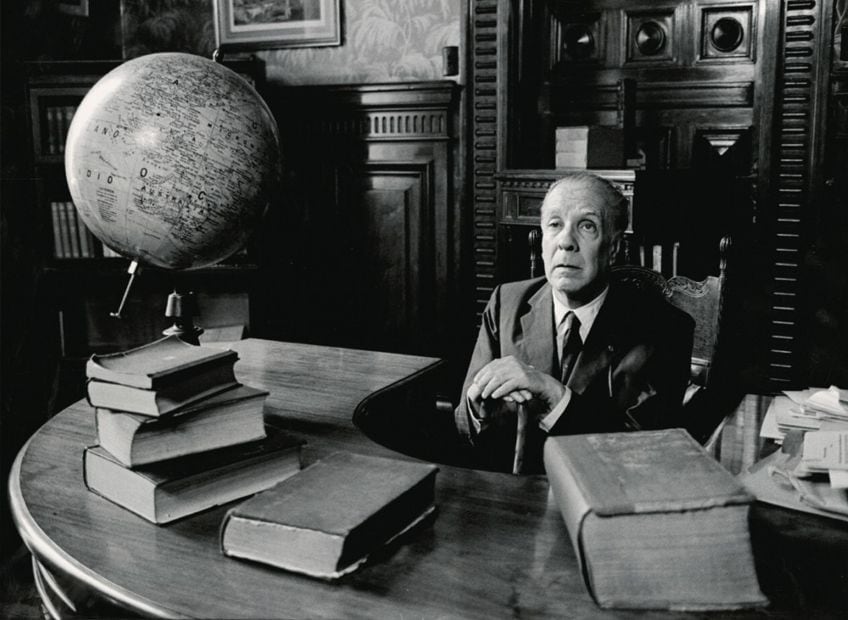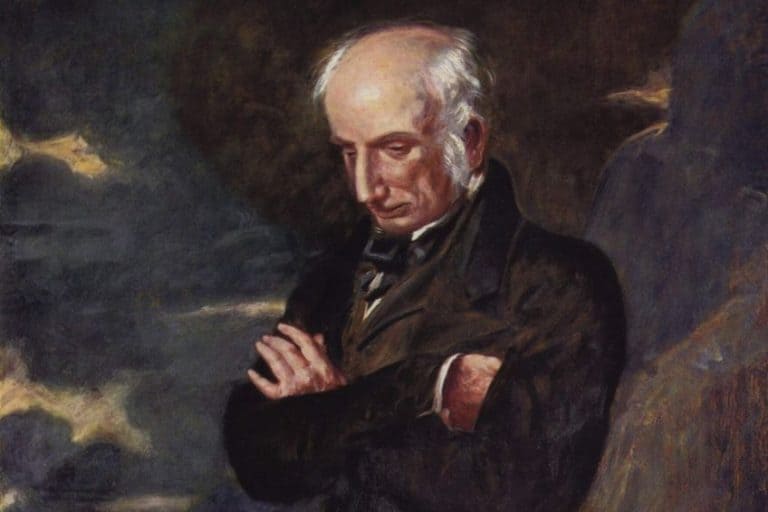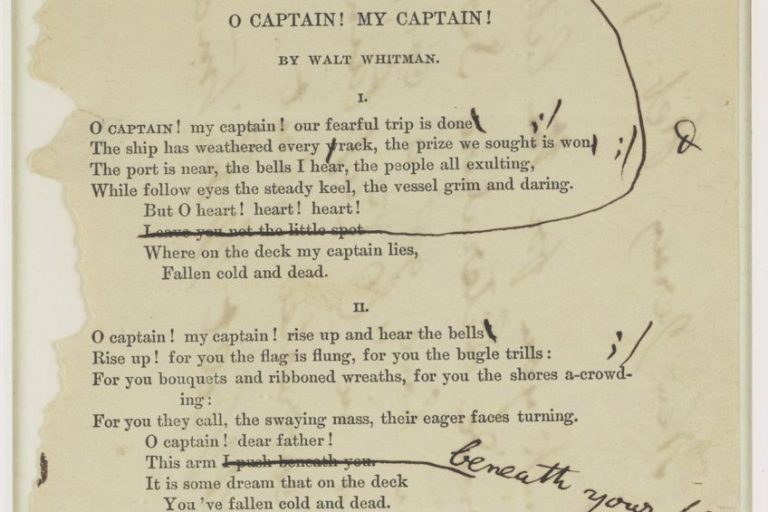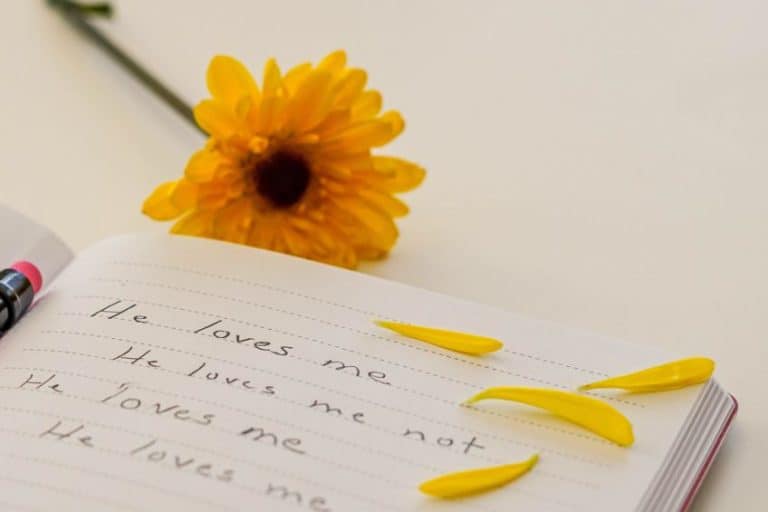Magical Realism – A Definition in Art and Literature
Magical realism is an interesting and somewhat difficult-to-define genre. There are even those who do not wish to define it as a genre at all. This article will attempt to examine magical realism in literature to help you understand it, and we will do this by examining the general ideas and characteristics behind the magical realism genre, a few figures who are notable within the genre, a number of famous instances of magical realism stories, and a brief look at some of the difficulties in defining it. Hopefully, this should give a good overview of the concept, so let us examine magical realism below!
A Look at Magical Realism
Magical realism is a literary and artistic genre that has a rather simple premise. However, there are some issues in definition that will be explored later in this article, but for now, let’s stick to the basic idea. In simple terms, magical realism is a genre that presents a world that is generally realistic in its structure and presentation. The thing that sets it apart is the inclusion of magical elements. These magical elements are typically somewhat beneath the surface or not entirely obvious. For instance, there will be no massive magical battles with people throwing fireballs at each other in an example of magical realism in literature.

So, that is the basic answer to the question: “What is magical realism?” However, how we define the genre can be a bit of a sticking point as different people can often view it in rather different ways. Some of these issues will be explored later, but before we can get to any of them, we should probably have a look at the history of the concept in some level of detail. So, let’s get to that after a brief summary for those who might not want to read this whole thing.
Summary of Magical Realism
If you are just looking for a quick summary of some of the major points that will be explored in the article below, then these few points should help you understand the basic premise behind the magical realism genre. However, these are simple points and do not go into all that much detail.
There is much more that can be explored when it comes to magical realism.
- Magical realism is a genre that combines realism and fantasy. The basic premise behind this genre of literature is that it generally makes use of realistic portrayals of the world and mixes fantastical elements in, and these magical aspects are often, but not necessarily, subtle.
- The magical realism genre has its origins in South America. While there are elements of magical realism that can be found around the world, the genre truly took root in South America. It has since become an international genre that can be seen around the world.
- Many of the most prominent magical realism writers are South American. There are a number of important writers in this genre, and they came from various South American countries, such as Jorge Luis Borges, Gabriel García Márquez, and Isabel Allende. The genre is often noted for being directly related to the South American experience and cannot be divorced from this reality.
This has been a brief array of points related to magical realism in literature, but it is a summary of many of the ideas that will be further explored below. If you are interested in learning more than simply the bullet points with regard to magical realism, then keep reading and discover far more about this literary genre.
The Origins of Magical Realism
The concept of magical realism first arose in the visual arts. The general idea behind it was to make use of realistic portrayals of the painted world with photographic style detail while also incorporating magical elements into the image. However, this is not the area that we are going to discuss today as the beginnings of magical realism in literature can be seen as originating in the 19th century but truly kicking it into high gear in the 20th century.
The early writers included several Romantic authors who made use of fairy tales, but these figures only served as inspiration for the magical realism writers who would emerge out of that in the 20th century. These figures inspired those who would go on to write some of what could arguably be called the earliest instances of true magical realism, such as the works of Massimo Bontempelli. The work of figures like this would eventually be translated into Spanish and would enter the Hispanic population in South America.

This is where we see the rise of what we customarily call traditional instances of magical realism in literature as we understand it in the present day. Until this point, the term that was primarily used was “magic realism”, and the use of “magical realism” emerged in 1955 in an essay by Angel Flores. This writer identified Jorge Luis Borges as the first “true” magical realist, but there was no acknowledgment of who had come before.
This means that, in many ways, the term came long after the magical realism already existed, and this is not uncommon. We generally understand things in retrospect, and seeing trends in real-time can be a difficult thing to accomplish. In one of the sections below, we will briefly discuss some of the central writers in the magical realism genre, but what is best to understand is that this genre is seen as a decidedly South American one. There may have been inspiration from other places, but as we currently see it, it is perceived as a Latin American creation. There are also many examples of magical realism in literature that are explicitly South American in their narratives and presentation.
The genre has since become far more international, and there are influences that range all across the world. It does also make it somewhat more complicated because the definitions of what is and is not an example of the magical realism genre can be a difficult thing to determine.
We will explore that in some detail later in the article, but for now, let’s move to some of the elements of magical realism that set it apart from other genres.
The Primary Elements of Magical Realism
The basic premise behind the magical realism genre is that it makes use of a more realistic world or presentation and combines that with fantastical elements. Most instances of magical realism in literature are not extremely overt in how they make use of the more fantastical aspects, but there are no definitive rules at play. This does also lead to some difficulties in deciding on the parameters of the genre, but that is a discussion point for later.
Some of the common elements of magical realism include the use of real-world settings, and these settings are often based on true historical and cultural sites. For instance, there are many examples of magical realism in literature that take place in South American countries. The use of this kind of a real setting can often be used as a means of calling attention to certain political issues prevalent in said country.

The use of metatextual elements is also a common feature in the magical realism genre. For instance, the authors of the texts often have an actual voice in their stories, such as being fictional versions of themselves within narratives. In addition, narration can often be highly indifferent, as if seeing the magical elements of the world as purely mundane things that do not require much in the way of explanation.
The use of mystery is also a common element in magical realist stories. The mysteries are also not always necessarily resolved. They are at play and may become central elements in the narrative, but the more realistic portrayal of the world can lead these kinds of mysteries to remain unresolved or left to the reader to interpret for themselves.
These are some of the primary elements of magical realism, but there are other instances and, as the genre is subject to change and adaptation, it can often make use of other elements and ideas. The magical realism genre is one that is difficult to pin down but ultimately fascinating in its presentation.
What is and what is not an instance of magical realism can often come down to the reader in question, but let’s leave that idea for a while and instead look at some of the most notable magical realists.
Important Figures in Magical Realism in Literature
There have been a number of important figures in the development of magical realism in literature, but we are only going to examine three of those figures in this article today. However, these three figures are some of the most famous writers in the magical realism genre and, as such, they have produced some of the most influential texts in magical realism. So, without waiting any longer, let’s check out some of these influential figures in this fantastical genre.

Jorge Luis Borges (1899 – 1986) from Buenos Aires
| Literary Movement | Magical realism |
| Years | 1899 – 1986 |
| Place of Birth | Buenos Aires, Argentina |
| Known For |
|
Jorge Luis Borges was an Argentine writer who is generally seen as one of the most important figures in the development of magical realism as a literary genre. His work explored a number of themes and ideas that would become commonly found in the genre, such as dreams, labyrinths, libraries, mirrors, mythology, and infinity.
His work became influential in far more areas than solely magical realism though, and many fantasy and philosophical pieces of literature have also taken considerable influence from his work.
One of the most widely known facts about Borges is that at the age of 55, he became completely blind yet continued to write. It has even been suggested that this led to some of the innovative literary practices that he would develop later in his life. In his life, he won numerous awards and was translated into many different languages, and figures like J.M. Coetzee have even noted him as one of the most innovative writers of all time and an important figure in 20th-century literature.

Gabriel García Márquez (1927 – 2014) from Aracataca
| Literary Movement | Magical realism |
| Years | 1927 – 2014 |
| Place of Birth | Aracataca, Colombia |
| Known For |
|
Gabriel García Márquez was a Colombian writer who was seen as one of the greatest writers of the 20th century. He wrote in more genres than only magical realism, and he spent time as a journalist who was highly critical of his country’s politics. He wrote a good deal of non-fiction but is best remembered in the present day because of his prose, and most considerably thanks to his novels.
He was widely read during his life and won coveted awards like the Neustadt International Prize for Literature and even the Nobel Prize for Literature.
His critical acclaim came with his works which served as popular successes. He often explored themes in his works to do with magic in otherwise realistic worlds, and so became one of the central figures in the development of magical realism throughout the 20th century. In addition to all of this, he is also noted as being the most-translated writer in the Spanish language.

Isabel Allende (1942 – Present) from Lima
| Literary Movement | Magical realism |
| Years | 1942 – Present |
| Place of Birth | Lima, Peru |
| Known For |
|
Isabel Allende is a Chilean writer who, unlike the others who have been discussed above, is still alive and is still producing works. She has produced works both inside and outside of the magical realism genre, and many of her most famous works are set firmly within this genre. However, she has also notably produced many other types of books.
For instance, many of her novels are focused on the lives of women and draw heavily from her personal experiences.
She has become widely recognized as one of the most-read Spanish language writers, and her work has been translated into many languages. This has also contributed to her impressive array of awards, such as receiving Chile’s National Literature Prize as well as the Presidential Medal of Freedom from the United States. Other than writing, she has toured and lectured across the United States and has since become an American citizen too.

Examples of the Magical Realism Genre
We have already had a look at some of the most important and influential figures in the development of the magical realism genre, but it is also worth looking at some of what those very same writers actually wrote. Some of the primary elements of magical realism were developed in the work of these writers, and so, it is worth exploring some of what they have written.
Let’s do so below.
The Aleph (1945) by Jorge Luis Borges
| Date Published | 1941 |
| Type of Text | Short story |
| Genre | Magical realism |
| Topic | A point containing all points |
The Aleph is a short story written by Jorge Luis Borges. This particular story is a great example of magical realism in literature. It involves a strange object that can be found in a poet’s basement, the titular “aleph”. This item is a special point in space in which all other points can be seen. If one looks into it, one can see everything in the universe. The story takes this fantastical premise but treats it in a realistic sense, and as such, it incorporates the elements of magical realism into it.
This story makes use of detailed realistic portrayals of a world in which the lives of people are presented in a very ordinary capacity. And the fantastical elements slowly creep their way in. Furthermore, the text is loaded with various allusions that relate to the outside world. For instance, it makes reference to various literary, religious, and philosophical areas.
This allows a blurring of the lines between the magical and the realistic.
The Autumn of the Patriarch (1975) by Gabriel García Márquez
| Date Published | 1975 |
| Type of Text | Novel |
| Genre | Magical realism |
| Topic | The solitude of power |
The Autumn of the Patriarch is a novel by Gabriel García Márquez. The book makes use of a segmented structure in which six different sections all recount the same story about a tyrannical figure. The book is set in an unnamed Latin American country, and this allows it to be about anywhere rather than needing to be definitive to any single country. The focus on highly realistic elements, like corruption, becomes a nesting ground for the more fantastical elements of magical realism to enter the scene.
The tyrant is found dead with animals picking at his body, and each story tells the tale of his life, and it has become a notable example of magical realism in literature because of the way in which it weaves various elements together, such as realistic narration with highly symbolic depictions of numerous aspects of the story, such as the use of the supernatural.
The story has become a key text in magical realism, and a fascinating piece about the solitude that comes with absolute power.
The House of the Spirits (1982) by Isabel Allende
| Date Published | 1982 |
| Type of Text | Novel |
| Genre | Magical realism |
| Topic | Life of the Trueba family |
The House of the Spirits is a novel by Isabel Allende. The story, like many examples of magical realism, takes place in a Latin American country that is not named but is a stand-in for Chile, and it follows the course of the Trueba family over the course of a number of generations. This makes the story a family saga, but events are not presented in a necessarily chronological sense and are instead weaved together with one another.
The elements of magical realism that come into play revolve around some characters, such as the figure of Clara, who is a clairvoyant. These fantastical elements come into play alongside the historical and cultural aspects of Chile that become part of the narrative, such as various military coups and the unrest that comes with political instability.
The text is a decidedly South American text and needs to be understood within that context, but this can often be said of many examples of magical realism in literature.
Issues in the Definition of Magical Realism
Every now and then a literary term comes along that is just a little bit difficult to truly define. The reasons for this are often multifaceted. So, what is magical realism then? We have already explored the concept in some detail, but there are issues with whether or not it is “magic realism” or “magical realism”, and the different terms often refer to either visual or literary arts respectively.
There are also debates over whether or not magical realism, as a literary genre, should even be considered its own genre or if it is merely an offshoot of realism in general. The term has also come to be associated with Latin American writers while there have been many international writers who have written in what could, ostensibly, be called instances of the magical realism genre.

There are also no clear-cut characteristics that are found in every single instance of magical realism in literature. Different texts approach both the realistic and magical elements of the genre in different ways. We usually see examples of magical realism as being mostly realistic while magical elements are weaved in, but this is not always necessarily the case.
All of these elements together, the differences in the name, whether it is a regional genre, and the lack of definitive characteristics across all instances of what has been termed magical realism make the term somewhat vague. However, this is also what can be seen as lending the genre an air of interest. It is a fascinating thing to explore, and working without extremely clear definitions can mean that interesting pieces are created on the margins that one could argue as magical realism even if others do not. It can often be up to you whether or not you define something as a definite example of magical realism or not.
Magical realism is a truly fascinating genre or mode within literature. The basic idea is also one that is vague and subject to opinion, and so many things can be argued to be magical realism, while others may not be. Hopefully, this article has given a good run-down of the general concept of magical realism in literature, but there are still many examples of the magical realism genre out there that are worth a read. So, if you get the chance, have a look at what you can find!
Frequently Asked Questions
What Is Magical Realism?
Magical realism is a literary and artistic genre that, in very basic terms, presents the reader with a realistic world that has a number of magical elements added to it. The magic is often something that forms part of the background and is not particularly clear-cut. For instance, an example of the magical realism genre will generally not include people shooting spells at one another. The genre is most commonly associated with a number of South American writers, but instances of the genre can be found around the world.
What Are the Common Elements of Magical Realism?
There are a number of common elements of the magical realism genre, such as the use of fantastical elements, realistic settings, a general lack of explanation of what is happening, and the use of narrators who do not appear to find anything unusual in the magical elements on display. However, determining how much of a fantastical side should be found in instances of the magical realism genre is subject to debate, and it can lead to difficulties in defining what does and does not count as examples of magical realism in literature.
What Are the Most Famous Examples of Magical Realism?
There are a great many examples of magical realism in literature, but some of the most famous of them all include texts like The Aleph (1945) by Jorge Luis Borges, The Autumn of the Patriarch (1975) by Gabriel García Márquez and The House of the Spirits (1982) by Isabel Allende. However, there are many other texts out there that are considered to be part of the magical realism genre, and many writers have also made use of this general style and genre of literature in their work.
Who Are the Most Famous Magical Realism Writers?
Some of the most famous writers in the magical realism genre include Jorge Luis Borges, Gabriel García Márquez, and Isabel Allende. However, there have been many others who have written examples of magical realism, such as Salman Rushdie, Neil Gaiman, and Nicola Barker. The genre has been quite influential on a number of different writers over the decades, and many who are not overwhelmingly associated with the genre have written their own examples of magical realism.
Is Magical Realism Still a Popular Genre?
Magical realism continues to be a popular genre. While the genre, in its original form, is now several decades old, those who were inspired by those early examples of magical realism in literature have continued to produce works into the modern day. However, there are those who would argue that some of the contemporary incarnations of the genre are not pure forms of magical realism, but that is often up to the reader to decide.
Justin van Huyssteen is a freelance writer, novelist, and academic originally from Cape Town, South Africa. At present, he has a bachelor’s degree in English and literary theory and an honor’s degree in literary theory. He is currently working towards his master’s degree in literary theory with a focus on animal studies, critical theory, and semiotics within literature. As a novelist and freelancer, he often writes under the pen name L.C. Lupus.
Justin’s preferred literary movements include modern and postmodern literature with literary fiction and genre fiction like sci-fi, post-apocalyptic, and horror being of particular interest. His academia extends to his interest in prose and narratology. He enjoys analyzing a variety of mediums through a literary lens, such as graphic novels, film, and video games.
Justin is working for artincontext.org as an author and content writer since 2022. He is responsible for all blog posts about architecture, literature and poetry.
Learn more about Justin van Huyssteen and the Art in Context Team.
Cite this Article
Justin, van Huyssteen, “Magical Realism – A Definition in Art and Literature.” Art in Context. November 21, 2023. URL: https://artincontext.org/magical-realism/
van Huyssteen, J. (2023, 21 November). Magical Realism – A Definition in Art and Literature. Art in Context. https://artincontext.org/magical-realism/
van Huyssteen, Justin. “Magical Realism – A Definition in Art and Literature.” Art in Context, November 21, 2023. https://artincontext.org/magical-realism/.









